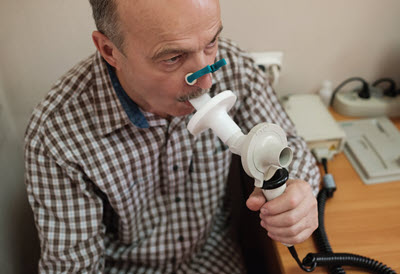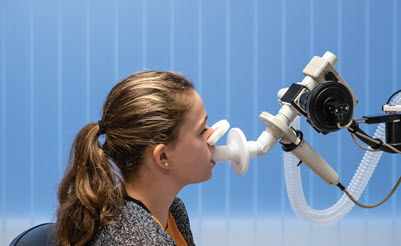Scan Code Descriptors to Bust These 3 PFT Myths
Learn how to report repeated PFTs on the same day. As a pulmonology coder, you know when and how to correctly report pulmonary function test (PFT) codes. However, situations can arise that test your expertise and make you step back to carefully analyze the scenario before assigning codes. With a careful examination of code descriptors, you can uncover the truth behind three commonly held PFT coding myths. Myth 1: Codes 94011-94013 Can Be Assigned for Patients of Any Age You’ll discover why this statement is a myth simply by reading the code descriptors. Each of the following codes are designated for procedures performed on an infant or child up to 2 years of age: These codes are designated for performing PFTs on infants and very young children. The procedures use the Raised Volume Rapid Thoracoabdominal Compression (RVRTC) technique, which involves moderately sedating the patient so the physician can obtain accurate PFT results. Code 94012 inherently includes 94011’s services, so you cannot report the two codes together. However, you may report 94013 with 94011 or 94012 if the physician performs lung volume measurements along with spirometric forced expiratory flows. CPT® Assistant, Volume 20, Issue 5, suggests you can report 94013 twice on the same day if the physician performs multiple evaluations, like before and after administering a bronchodilator. However, payers (e.g., Medicare) abide by a medically unlikely edit (MUE) limitation of once per day. Since this limitation is based on clinical benchmarks rather than policy, you may need to appeal with the proper documentation if denied. Myth 2: Use Modifier 52 With 94010 if the Physician Only Checked the Total Vital Capacity This myth is debunked simply by looking further into the CPT® code set. You’ll assign 94150 (Vital capacity, total (separate procedure)) when the pulmonologist performs a procedure where they only measured the total vital capacity of the patient’s lungs. While modifier 52 (Reduced services) is a modifier option for 94010 (Spirometry, including graphic record, total and timed vital capacity, expiratory flow rate measurement(s), with or without maximal voluntary ventilation), you wouldn’t append it to 94010 in this scenario. That is because the CPT® code set contains a separate code that specifically covers the service that the physician performed. In fact, CPT® Appendix A explains “Under certain circumstances a service or procedure is partially reduced or eliminated at the discretion of the physician or other qualified health care professional. Under these circumstances the service provided can be identified by its usual procedure number and the addition of modifier 52, signifying that the service is reduced.” Modifier 52 is reserved for conditions where the physician knew beforehand that a portion of the spirometry procedure would be eliminated, and not when a something unexpected occurred during the procedure, which resulted in the physician not performing a portion of the services. “Code 94150 is designated as a ‘separate procedure’ and is therefore bundled into more extensive respiratory testing,” says Julie Davis, CPC, CRC, COC, CPMA, CPCO, CDEO, AAPC Approved Instructor, risk adjustment manager of Physician Health Partners in Parker, Colorado. This means that while you can’t report 94010 and 94150 together, you will assign 94150 when the total vital capacity is the only service performed at the time of the visit. However, make sure to check with your payer for proper reporting. The Medicare Physician Fee Schedule (MPFS) designates 94150 with a “bundled” status (B), which means that Medicare doesn’t make a separate payment for 94150. This is because including 94150 on certain Medicare policies contradicts the code’s status. Your best move in this situation is to obtain clarification from the payer. Myth 3: You Can Report the Same CPT® Code if a Provider Repeats a PFT on the Same Day You can set this myth straight in one of two ways. One method is to append the appropriate PFT code with modifier 76 (Repeat procedure or service by same physician or other qualified health care professional) if the documentation exhibits the need for and repeated performance of the PFT on the same day. For example, if a provider performs spirometry on a patient, but the values are inconclusive or the physician needs additional testing to make a definitive diagnosis, then the provider could request the patient repeat testing on the same day. In that case you’d append modifier 76 to the applicable spirometry code, such as 94010-76. Do not report 94010 twice if the initial testing was incomplete due to equipment failure or the patient’s inability to follow the instruction. On the other hand, you’d report a single code if the provider performed multiple spirometry tests with specific stimulants to evaluate the patient for bronchospasm in response to the agents. For this scenario, you’d assign 94070 (Bronchospasm provocation evaluation, multiple spirometric determinations as in 94010, with administered agents (eg, antigen[s], cold air, methacholine)) without modifier 76. Code 94070’s descriptor includes “multiple spirometric determinations,” which means that the provider might perform the test as many times as necessary to evaluate the patient’s condition.





